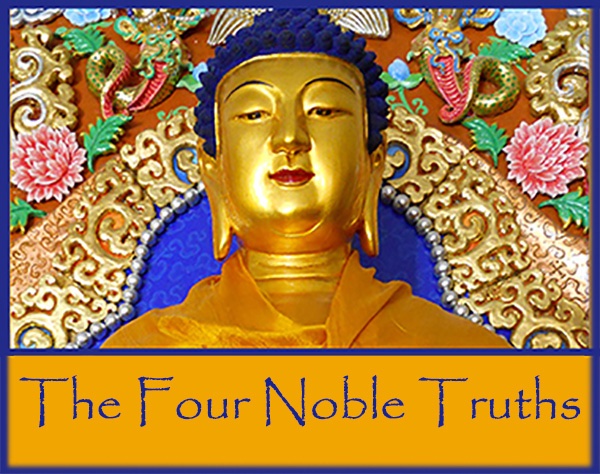The Four Noble Truths

The Four Noble Truths are "the truths of the Noble Ones, the truths or realities which are understood by the "worthy ones" who have attained Nirvana. The truths are dukkha, the arising of dukkha, the cessation of dukkha, and the path leading to the cessation of dukkha.
In the sutras, the four truths have both a symbolic and a propositional function. They represent the awakening and liberation of the Buddha, but also the possibility of liberation for all sentient beings, describing how release from craving is to be reached[ In the Pali canon, the four truths appear in a "network of teachings," as part of "the entire dhamma matrix," which have to be taken together. They provide a conceptual framework for introducing and explaining Buddhist thought, which has to be personally understood or "experienced".
The four truths defy an exact definition, but refer to and express the basic orientation of Buddhism in a formulaic expression: we crave and cling to impermanent states and things, which is dukkha, "incapable of satisfying" and painful. This craving keeps us caught in samsara, the endless cycle of repeated rebirth and dying again, and the dukkha that comes with it. But there is a way to end this cycle and reach real happiness, namely by letting go of this craving and attaining nirvana, whereafter rebirth and dissatisfaction will no longer arise again. This can be accomplished by following the eightfold path, restraining oneself, cultivating discipline, and practicing mindfulness and meditation.
The function of the four truths, and their importance, developed over time, when prajna, or "liberating insight," came to be regarded as liberating in itself, instead of or in addition to the practice of dhyana. This "liberating insight" gained a prominent place in the sutras, and the four truths came to represent this liberating insight, as part of the enlightenment story of the Buddha.
The four truths became of central importance in the Theravada tradition, which holds to the idea that insight into the four truths is liberating in itself. They are less prominent in the Mahayana tradition, which sees the higher aims of insight into sunyata and following the Bodhisattva-path as some central elements in their teachings and practice. The Mahayana tradition reinterpreted the four truths to explain how a liberated being can still be "pervasively operative in this world." Beginning with the exploration of Buddhism by western colonialists in the 19th century and the development of Buddhist modernism, they came to be often presented in the west as the central teaching of Buddhism.
The Four Noble Truths are:
- Dukkha (Sorrow and suffering, anything makes you unhappy)
- Samudaya (The causes of suffering)
- Nirodha (Suffering can end)
- Magga (How to end suffering)
To learn more attend Master Choa Kok Sui’s Inner Teachings of Buddhism Revealed course.
